-
 यहां है स्वास्थ्यपूर्ण और बेहद स्वादिष्ट 8 चीजें जो आप अपने बच्चों को दोपहर के खाने में या स्कूल से लौटने पर दे सकती हैं । स्वास्थ्य पूर्ण आहार के फायदे और कुछ जानकारी ।(2020)
यहां है स्वास्थ्यपूर्ण और बेहद स्वादिष्ट 8 चीजें जो आप अपने बच्चों को दोपहर के खाने में या स्कूल से लौटने पर दे सकती हैं । स्वास्थ्य पूर्ण आहार के फायदे और कुछ जानकारी ।(2020)
-
 Ensure Your Child is Getting Adequate Nutrition: 8 Tasty Recipes for Healthy Lunches for Kids That Guarantee an Empty Lunch Box or Clean Plate!
Ensure Your Child is Getting Adequate Nutrition: 8 Tasty Recipes for Healthy Lunches for Kids That Guarantee an Empty Lunch Box or Clean Plate!
-
 Introduce Your Child to the Joys of Cooking: 10 Easy Snacks for Kids to Make That They Will Love to Eat Too!
Introduce Your Child to the Joys of Cooking: 10 Easy Snacks for Kids to Make That They Will Love to Eat Too!
Tips on Raising a Child with Autism

Self Help and Positive Parenting

Having an autistic child can have you experiencing a wide range of emotions of panic to absolute bewilderment as a parent. Fear of the unknown to feeling totally out of depth is a completely normal reaction. However, know that you aren’t alone! Even though it can be quite isolating, the more guidance and support you get, the better you’d start feeling and be able to help your child. Take an initiative in reaching out and finding the requisite support you require. Educate yourself, read and research as much as you can, consult appropriate organisations and support groups, stay updated with the latest findings and always consult reputable sources of information.
Confide and share your child’s condition with your extended family and friends with confidence and a positive frame of mind. You are your child’s advocate and that begins at home first. Focus on your child’s strengths rather than his/her impairments. Be prepared for difficult conversations or questions from older generations. Whether you can understand your child’s condition or not, it is important to love your child irrespective. Confidence and self-assurance can make a lot of difference to your child’s growth. In addition, don’t forget yourself, make time for your needs and other relationships in your life. Seek counselling or therapies to help deal with stress or depression.
Support System and Safety

It is natural for you to feel unsure about how to help your autistic child or be confused about the different ways of treating autism, as it is a life-long condition and a conservative thought process is that nothing you do will make a difference. However, even though it is true that autism is something you can’t simply grow out of, there are different treatments available that can help your child acquire new ways of doing the same thing and overcome their developmental challenge. Seek out local support groups or parent networks of families with autistic children and perhaps ask your doctor, physician or therapist for referrals. Be consistent in providing your child with an environment that fosters learning and also in the way you interact with your child amidst challenging behaviours.
Stick to a schedule or routine as this is what will help your child perform their best. Keep distractions and interruptions to a bare minimum during this routine with ample room to face uncertainties. Always use positive reinforcement, use encouraging words and praise and reward any good behaviour. Ensure your child has a safe home with use of visual cues like using coloured tape to mark areas that are off-limits for the child, labelling items with pictures and child proofing your house.
Designing a Personalised Treatment Plan for Autism
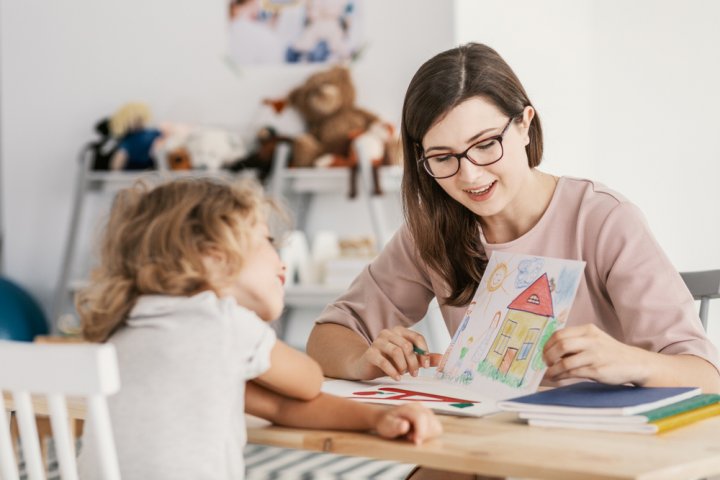
As a parent of an autistic child, you’re bound for some self-criticism and repeatedly evaluating your performance even if you’re giving it your best. With changing trends and ongoing research, there is a multitude of information and therapies available for raising kids with autism. However just like each child is different but with some common traits at different stages of life, autistic children are no different. It’s just that in their case, you need to have a more tailored approach to treating their autism as compared to every day troubleshooting. It is important to find out what works best for your child, as a common approach may not work for every child with autism. One way of doing this is to build on your interaction with parents of other autistic kids and learning about different ways they work with, experiment and explore further. You can also factor in recommendations of occupational therapists and other healthcare professionals from the stream to gather viable options to work around.
Ideas on Raising a Child with Autism
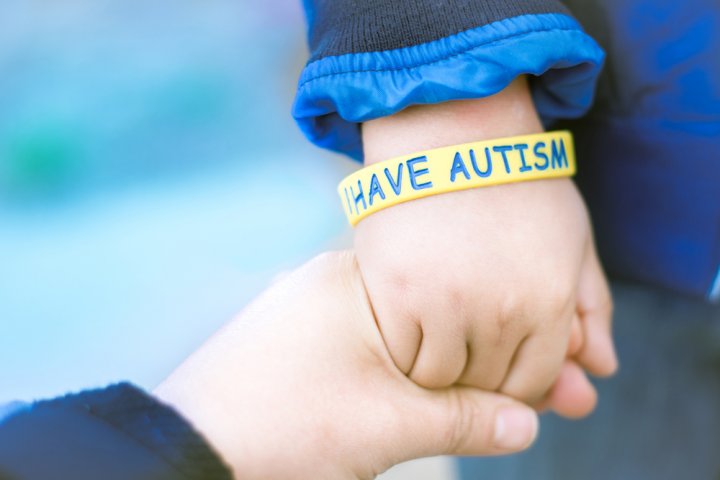
Reframing Tantrums and Using Positive Discipline
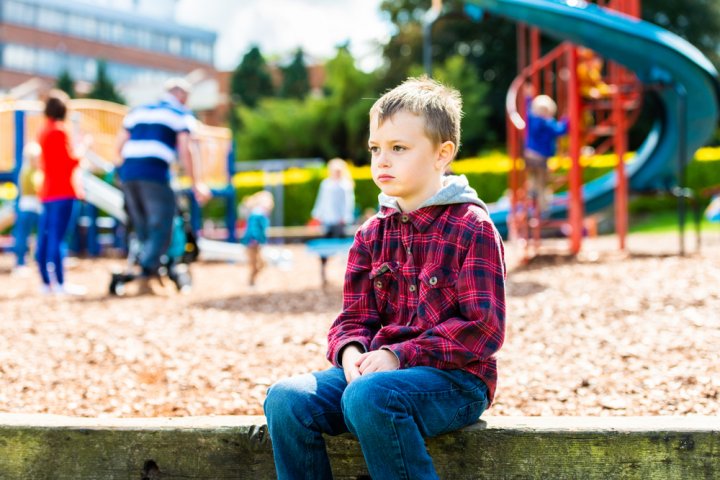
Most autistic children suffer from physical blending difficulties which makes them absolutely disconnected and disconcerted in unfamiliar surroundings. And whilst in the case of non-autistic children this may be viewed as a temper tantrum or possibly a frustrating act, unfortunately, for an autistic child this is a simple response to an excessively chaotic or exciting environment. Each child has a different tolerance for a sensory load and understandably a different way of responding to it as well, which he/she can develop differently during different stages of growth. In such a case it is best to introduce your autistic child to a less sensory stimuli to help the child acclimatise successfully. Positive encouragement and reaction can effectively discipline your autistic child as in the case of any other child. Positive comments, compliments and affectionate expressions can go a long way in building your child’s self-confidence and promoting his/her behaviour constructively.
Your child’s forte represents his/her highest calibre of performance and recognising the child’s talent and subsequent reinforcement of that will help strengthen the kid’s skills. For instance if your child loves music and numbers, then putting together a multifaceted puzzle in a stipulated time frame can help his mental growth. Another way is to send repetitive messages of indulging in activities or interests as a socially acceptable behaviour for the autistic child, which may in turn lead to a possible way of driving the child’s career in the future more productively!
Adapting Your Parenting Style
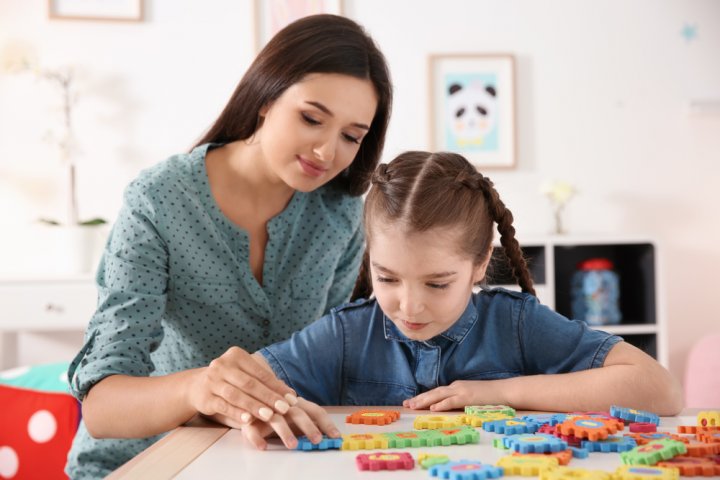
The first step in working with and around your autistic child is to acknowledge his/her difficulties, reducing judgement calls towards self and child and cultivating compassion. An autistic child is like a square peg in a round peg world and no amount of turning or pushing will change that difference. It is important to realise and accept the fact that your child is different and has been blessed with the gift of seeing and experiencing the world differently than all others. The child’s gift is balanced out with a degree of impairment and hardship, as is true for any other life challenge and success. Some of the world’s greatest names like Einstein, Mozart, Bill Gates, Picasso, Bach, Anthony Hopkins, Isaac Newton and more have been autistic. If you give your child the love, compassion, support and direction tailored to his/her needs, the child is bound to thrive!
Autistic children process information received differently and may differ in quick to slow responses. This means that it would take them longer to understand what’s been heard and then a longer time to work out a response or effort to comply with the request. If your child has a slow processing speed, give him/her additional time to process what’s been said or asked of and this doesn’t necessarily reflect on the child’s intellectual ability. For instance, if you are leaving the house with your autistic child, give him/her extra time to process the need to put on shoes, wear the right kind of clothes, pack stuff, etc.
Social Skills Activities
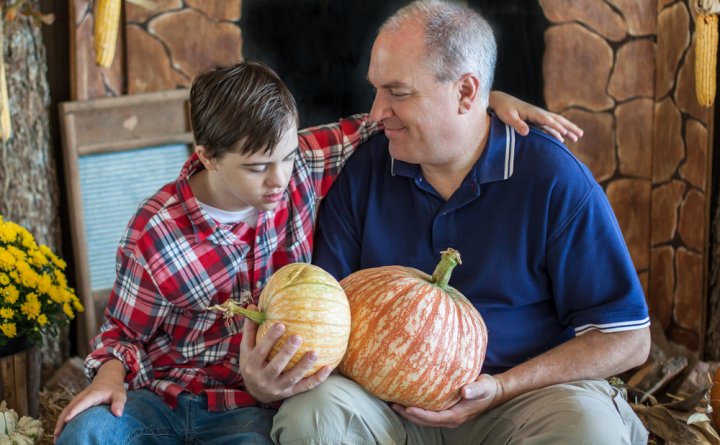
A common thing in autistic children is the challenge of communicating or connecting with other kids and the use of social skills activities can help these children identify the social hints, practice understanding and pick up other essential life skills. For instance, a name game is a fun way of introducing the child to other kids and learning about them as well. You can play this game with your child, where the whole family sits in a circle and you start by pointing at yourself and saying your name (“I am ____.”), then ask the second family member on your right to share their name like you and then repeat your name while pointing at you. When this exercise repeats to the subsequent family member and then finally your child, he/she will get a head start on making new relations!
Similarly, reading a book to your child and then asking him/her how it’d feel to be the story’s main character will help the child see a particular situation in his/her life from another perspective, identify the emotional cues and encourage the child to put himself/herself in another person’s shoes. For instance, if you’re reading out Cinderella’s story and you ask your child how he/she would feel if they had siblings who were mean to the kid, it’d help the child develop empathy. Yet another activity to help enhance your autistic child’s social skills entails sharing. Have your child share something that’s their own by way of what interests the child with that specific object and you’d do the same, this will not only help the kid to learn sharing, but also practice active listening and facilitate bonding with others.
Sensory Activities
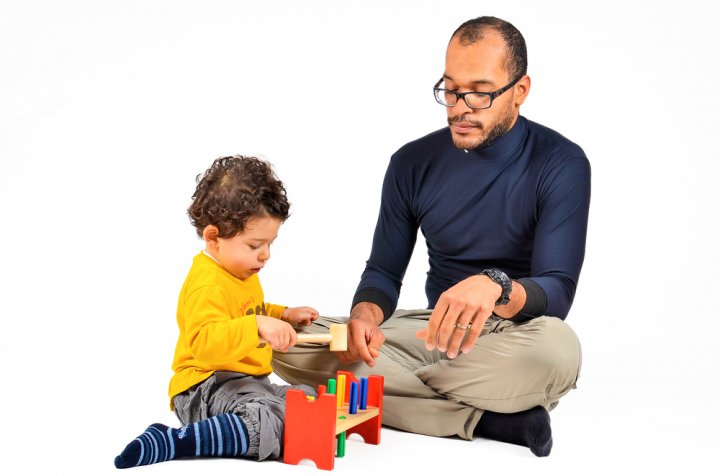
Children with autism are mostly overexcited of any sensory inputs and it will help the child focus better if you instil different ways and introduce activities that involve sensory stimulation. For instance, getting your child involved in an activity where he/she has to sort food in different colours, shapes, texture or size and then using the food to learn basic maths of counting, adding, subtracting will help your kid grasp the concept better and then you could follow it through by rewarding the child with the food they’ve used to play with. Similarly, an art activity where the child focuses on activities of touch and sight will help concentrate. You could fill a used plastic bottle with water, glitter and some drops of food colour to make a visually appealing toy for the child with a few buttons or marbles dropped in. Seal the lid tightly using a hot glue gun. This activity will help your child stay focused and engaged.
Another classic activity is to take a few coins, place a sheet of paper on the top and have the child use mixed crayons to rub a colourful pattern onto the paper. You could do this together with your child and help develop their hand-eye coordination skills. Further if you have friends/family who’ve travelled to different places, you could borrow coins they may have collected and talk to your kid about those places.
Calming Activities
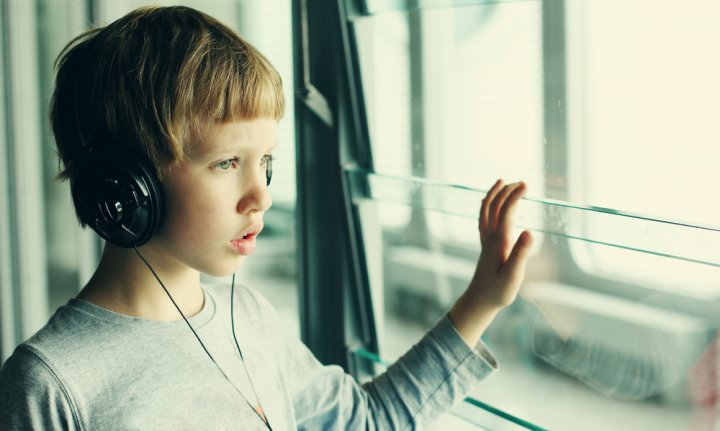
When you autistic child’s overwhelmed, a meltdown may induce losing control over their emotions. In such a case, initiating a calm down will help reduce the stress for your child. Grounding can help focus on the present moment without adding to the stress. You could help your kid count to 10 or recite alphabets slowly, have him/her tune into music that’s calming and focus on different instruments or list 5 different things that they can see in a room, have the child do some simple stretching exercises or holding onto a stuffed animal or a piece of clay or a stress ball. You could also make a retreat corner for your child and fill it with sensory aids, picture books, calming activities and comfortable seating that the child would find easy to adjust to. You can let the child know that whenever he/she likes, they can retreat to this calm zone and spend some time there. For sensory aids/toys you could use play dough, stress balls, aromatherapy pillows, plush toys, fidget toys or weighted blankets.
Multi-Sensory Learning
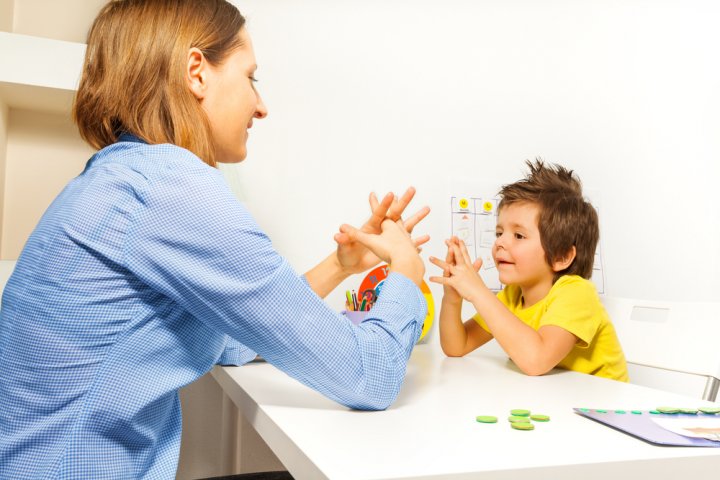
Among the most popular techniques used to treat or help kids with autism grow is the use of multi-sensory approaches that not only reduce their sensory integration dysfunctions but also strengthen their weaknesses by positive reinforcement. Most kids with autism are visually stronger and hence visual approaches can be incorporated in their learning. You can use picture or text cards or videos to help your child make a verbal and visual connection. Combining songs, chants or rhymes with picture cards will help the child correspond to the words well. Similarly, using tangible items like play dough or clay in making models, use of puzzles, paint or chalk can help develop the child’s fine motor skills.
Other approaches include the use of kinesthetic methods by way of body movements. As movement encourages communication, bouncing, foot stamping, clapping or any other body movement combined with activities of singing or counting or learning songs can be used to create a competitive learning game for the child. You can also create a multi-sensory environment for your child by blocking outside noise, controlling their space, temperature and lighting effect, by incorporating various sensory stimulating elements that aid auditory, visual, tactile or kinesthetic approaches.
Indoor Activities
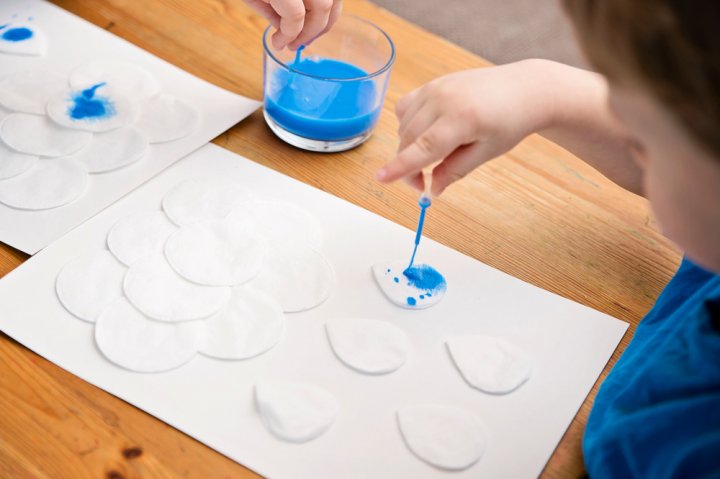
Some indoor activities meant for autistic kids can help improve their social skills, strengthen the bond between the child and people around him/her and also create a fun-filled environment with just a little effort! For instance, ripping or shredding paper can help create a wonderful arrangement or decorative element. For autistic kids, it is a sensory act of touching and handling paper and playing with different colours and shapes. You can use watercolour paper, bright construction papers in different colours, flesh coloured paper, various shades of green in construction paper. Work with your child to create a shredded flower bouquet with the use of these papers. Kids love swirling paint on paper and creating beautiful patterns as it helps them improve on their recognition and colour observation skills. An interesting activity to learn indoors, you could arrange for craft sticks, an ice cube tray, some plastic wrap, paper and liquid egg tempera paint. Have your child pour different coloured or same coloured paint into the ice tray and stick a craft stick in the middle of each cube. Keep the tray inside the freezer for frozen cubes. Once the cubes are ready the child can choose a colour and swirl the painted cube on paper. You can also follow this up with a discussion on how the paint altered in the freezer, what is happening when it swirls on the paper, how it melts, etc. Some other indoor activities can include:
- Paint Chip Storytelling where you have coloured sample cards with interesting names, pick a card at random from the lot and build a story around it. This will help improve the child’s narrative and imaginative skills.
- Making Shapes with craft shapes, where using 2 craft sticks at a time, the child draws a shape such that when you separate them, the shape’s equally present on both sticks. Have the child create as many paired sticks as possible and then mix all the sticks. The activity would entail having the child find the matching stick for one to create the correct shape. You can help make squares, triangles or circles or any other shape which is easy to work around.
- Create Number Rubbings to improve hand-eye coordination and work the small muscles of the child’s hand. Draw 1-10 numbers on blank papers with a number on each sheet, these numbers should be in block, big and outlined for ease of colouring. This will help the kid make a design by placing a texture below the paper and rubbing a coloured crayon on it. You can sit with your child and explain how to create different textures for each number page. For instance for number 3, you can create 3 textures/designs and also help the child learn maths with corresponding objects.
Playground Activities
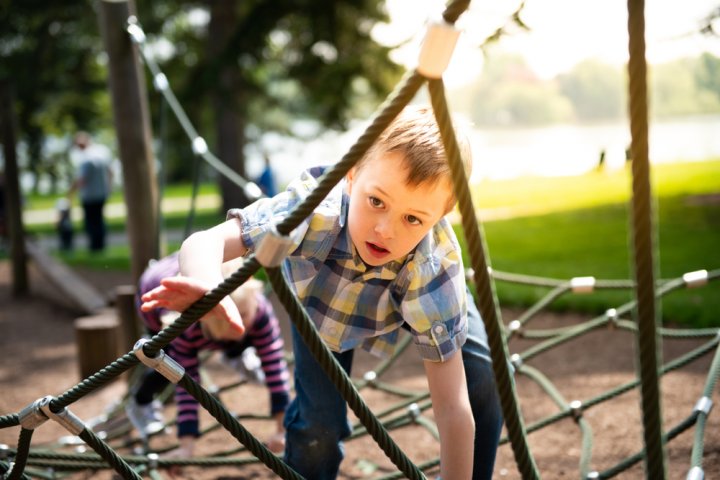
All kids love a playground for its one of the best places for children to improve on their motor skills, a sense of balance, confidence, vestibular orientation and enhance their social skills. Head for a playground, hover around your child at a safe distance where you can keep an eye and let him/her be independent enough to play. Encourage your kid to explore different slides and swings as well. You could also play with your kid using a hula hoop, jump rope or walking like an animal. With ample ground to practice different moves, both you and your child can enact hopping like a frog, crawling like a puppy, galloping like a horse, slithering like a snake, jumping like a kangaroo or even walking like a crab.
Indoor Games
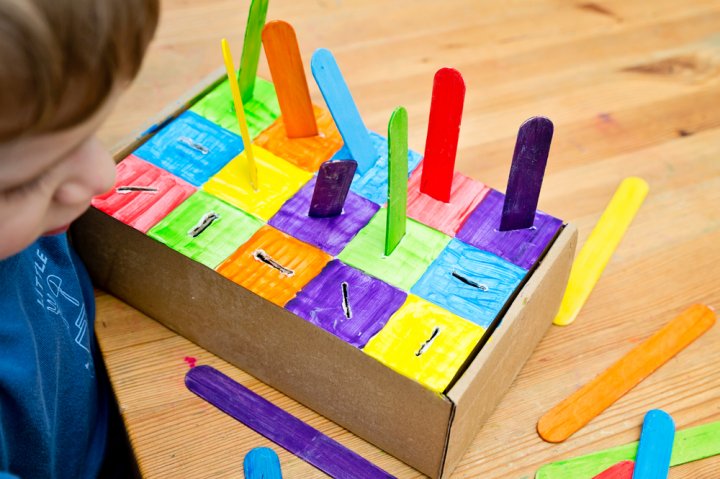
It can be stressful for parents to keep your autistic child engaged without getting into trouble every day. Here are some games you can design for your child when indoors:
- Coloured Beans – Take some lima beans, a Tupperware container or a bag, food colour and a paper towel. Ask your child to take the cup of beans and add 15 drops of the food colour to it. Close the lid and cover the container for about 10-15 seconds till all the beans get coloured. Now have the child spread the beans evenly on paper to dry. These coloured beans will last for a long time when stored in an airtight container and your child will enjoy moving and running his/her fingers through the beans!
- Rainbow Excavation – Get some coloured crayons in rainbow/different shades, a large vessel or container and some water. Ask your child to gather the various crayons. Measure the large container and divide it into 6-7 layers, adding water to one layer and placing a coloured crayon in bits and pieces to it. Place the vessel in the freezer for some time, then take it out and then the 2nd layer of water with another coloured crayon in bits and pieces. Follow this process for all the layers with different coloured crayons. Once all the layers are done, remove the ice tower by turning over the container and keep it upside down. Your child now has an ice tower to play with!
Outdoor Games

Outdoor games provide essential obstacle courses for a child, like making your kid run around a bush, down a play slide, jump over a stick and more. For most of these outdoor games, you don’t need equipment. Just be creative. You can also play a game of hide and seek outdoors and perhaps integrate the game with some visual perception aids, turn taking and counting tactics. When it’s raining, let your child get drenched in the rain, give them a broom to slosh away the water and a bucket to collect it. This will enhance the child’s sensory integration skill. You can also use skateboards, scooters or bicycles to encourage balance, motor planning and linear acceleration, all of which are significant for sensory processing in an autistic child. Secure your child with a helmet and safety pads all the time during such outdoor games and activities. Show your child how to pedal a bike, lower their seat and have their feet touching the ground, walk and push, raise the seat, etc.
Bonus Tips: Alternative Healing for Autism

There are a lot of popular therapies and treatments with inconclusive evidence for treating autism. However, they are known to manage autistic symptoms in a contained and safe manner as well. Here are some of those listed for your ease of reference (for further exploration and research):
- Melatonin – is known to have been used in structured doses with professional recommendations to treat sleeping disorders in autistic children. Melatonin can also help regulate the body and generate immunity.
- Diet & Supplements – may not have much effect in the control of autism, however it is known to have a positive impact in calming a child’s aggression. Reducing sugar intake in the child’s diet can calm him/her a bit. Omega-3 is considered to be helpful as well as a neuro-protector that enhances a healthy growth of the neurons.
- Vitamins, Enzymes and Probiotics – can be considered as well to treat some core autistic symptoms. Probiotics provide the good bacteria that can correct imbalances in the gut’s bacterial composition.
-
 Entice Your Picky Eater Child with our Kid-Friendly Recipes: 10 Easy Recipes for Kids to Enjoy!
Entice Your Picky Eater Child with our Kid-Friendly Recipes: 10 Easy Recipes for Kids to Enjoy!
-
 क्या आप जानतें है,की बच्चे का स्वस्थ रहना और सम्पूर्ण विकाश करना उसकी आदतों पर निर्भर करता है : 12 ज़रूरी स्वस्थ और सेहमंद आदतों की सूचि जो उन्हें स्वस्थ रहने में मदद करेगी । (2020)
क्या आप जानतें है,की बच्चे का स्वस्थ रहना और सम्पूर्ण विकाश करना उसकी आदतों पर निर्भर करता है : 12 ज़रूरी स्वस्थ और सेहमंद आदतों की सूचि जो उन्हें स्वस्थ रहने में मदद करेगी । (2020)
-
 Eggs Are Among the Healthiest Foods on Earth. Discover 10 Simple Egg Recipes for Your Kids and Amazing Health Benefits of Having Eggs (2020)
Eggs Are Among the Healthiest Foods on Earth. Discover 10 Simple Egg Recipes for Your Kids and Amazing Health Benefits of Having Eggs (2020)
-
 Importance of Healthy Habits for Kids(2020): Key for a Happy and Healthy Life and Everything You Need to Keep in Mind
Importance of Healthy Habits for Kids(2020): Key for a Happy and Healthy Life and Everything You Need to Keep in Mind
-
 Facing the Daily Challenge of Getting Your Kids to Eat Breakfast without Complaining? Not Anymore with Our 7 Healthy Breakfast for Kids and 4 Quick Breakfast Options for Those Time Challenged Days.
Facing the Daily Challenge of Getting Your Kids to Eat Breakfast without Complaining? Not Anymore with Our 7 Healthy Breakfast for Kids and 4 Quick Breakfast Options for Those Time Challenged Days.
Your Patience and Positive Attitude are Your Best Partners
If you are blessed with an autistic child then your patience and your positive attitude will be your best partners in parenting. These attributes will not only help you overcome the most difficult of challenges but also assist you in providing a good and healthy environment for your child's growth and development. We hope this BP Guide would have helped you understand how to manage autism in your child. Stay connected with us for more such engaging content.

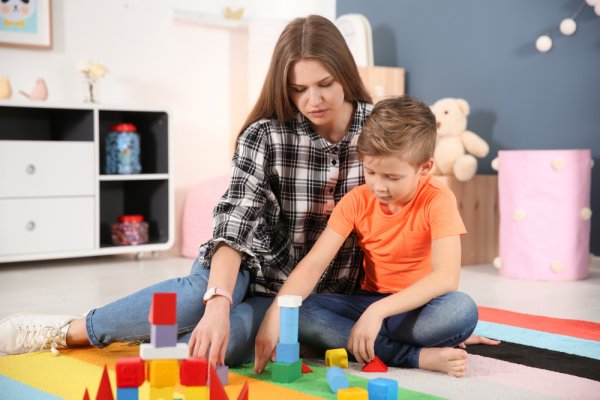
 Highlight the Best Facets of Your Incomparable Beauty: Discover the Best Face Highlighter Currently Available in India and Everything You Need to Know About Using Face Highlighters for Maximum Effect (2023)
Highlight the Best Facets of Your Incomparable Beauty: Discover the Best Face Highlighter Currently Available in India and Everything You Need to Know About Using Face Highlighters for Maximum Effect (2023)
 Forget the Blemishes and Get that Picture Perfect Flawless Radiance on Your Face: Check out the Best Foundations for Oily Skin Currently Available in India and Everything You Need to Know About Makeup Foundations (2023)
Forget the Blemishes and Get that Picture Perfect Flawless Radiance on Your Face: Check out the Best Foundations for Oily Skin Currently Available in India and Everything You Need to Know About Makeup Foundations (2023)
 Make Your Presence Felt Wherever You Go: Discover the Best Perfumes Under 2000 for Both Men and Women to Announce Your Arrival and Make Any Occasion Memorable (2023)
Make Your Presence Felt Wherever You Go: Discover the Best Perfumes Under 2000 for Both Men and Women to Announce Your Arrival and Make Any Occasion Memorable (2023)
 Protect Your Oily Skin from the Harmful Rays of the Sun: Discover the Best Gel Based Sunscreens for Oily Skin and Everything You Need to Know Before Buying One (2023)
Protect Your Oily Skin from the Harmful Rays of the Sun: Discover the Best Gel Based Sunscreens for Oily Skin and Everything You Need to Know Before Buying One (2023)
 Minor Blemishes and Wrinkles Affecting Your Confidence? Check out the Best BB Creams to Conceal Your Worries and Nourish Your Skin to Restore the Healthy, Radiant and Glowing Complexion Back Again (2023)
Minor Blemishes and Wrinkles Affecting Your Confidence? Check out the Best BB Creams to Conceal Your Worries and Nourish Your Skin to Restore the Healthy, Radiant and Glowing Complexion Back Again (2023)
